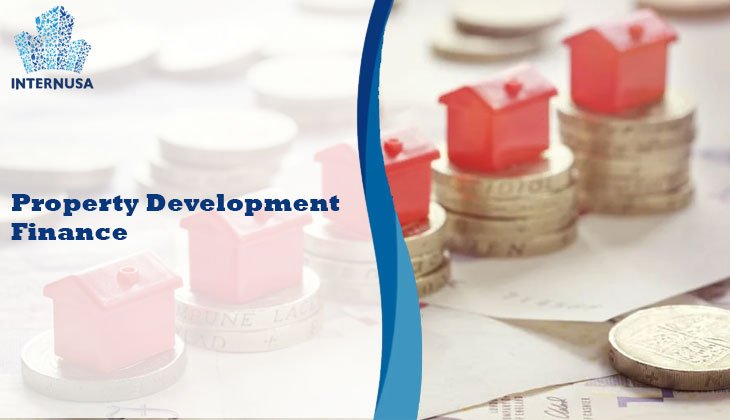Must Know! Property Development Financing Guide
Property development finance is a specialized form of funding used to finance the construction or renovation of real estate projects. This type of financing plays a crucial role in the property development process, enabling developers to bring their projects from concept to completion. Whether you’re developing a residential, commercial, or mixed-use property, understanding the intricacies of property development finance is essential to ensure the success of your project.
Understanding Property Development Finance
Property development finance differs from traditional mortgages and loans primarily due to its purpose and structure. While a standard mortgage is typically used to purchase an existing property, development finance is specifically designed to cover the costs associated with the construction, renovation, or refurbishment of a property.
The key elements of property development finance include:
Loan Amount
The loan amount is typically based on a percentage of the gross development value (GDV) of the project. The GDV represents the estimated market value of the property once the development is complete. Lenders usually offer a loan-to-value (LTV) ratio of up to 70-80% of the GDV.
Interest Rates
Interest rates for property development finance are generally higher than those for standard mortgages. This is because development finance is considered higher risk due to the uncertainties involved in construction projects. Interest rates can be fixed or variable, depending on the lender and the terms of the agreement.
Loan Term
The term of a property development loan is typically shorter than that of a standard mortgage, often ranging from 6 months to 3 years. The term is usually aligned with the expected duration of the development project, allowing the developer to repay the loan upon the sale or refinancing of the completed property.
Drawdown Facility
Unlike traditional loans, which are disbursed in a lump sum, property development finance is often provided in stages, known as drawdowns. These drawdowns are released at key milestones in the development process, such as land acquisition, foundation completion, and structural work. This ensures that funds are only released as needed, reducing the risk for both the lender and the developer.
Exit Strategy
Lenders typically require a clear exit strategy as part of the financing agreement. The exit strategy outlines how the developer intends to repay the loan, whether through the sale of the property, refinancing, or leasing. A well-defined exit strategy is crucial for securing development finance, as it demonstrates the developer’s ability to generate sufficient returns to repay the loan.
Types of Property Development Finance
There are several types of property development finance available, each suited to different stages of the development process and varying levels of project complexity.
Senior Debt
Senior debt is the primary source of funding for most property development projects. It is typically secured against the property and is the first to be repaid from the proceeds of the development. Senior debt lenders usually provide up to 70-80% of the project’s GDV, with the developer contributing the remaining equity.
Mezzanine Finance
Mezzanine finance is a secondary form of funding that sits between senior debt and equity in the capital structure. It is used to bridge the gap between the senior debt and the total funding required for the project. Mezzanine finance is more expensive than senior debt due to its higher risk, but it allows developers to secure additional funding without diluting their equity.
Equity Finance
Equity finance involves raising capital by selling a stake in the development project to investors. This can be an attractive option for developers who want to reduce their debt burden or who are unable to secure sufficient senior debt. Equity investors share in the profits of the development, making it a costlier option than debt finance but also reducing the financial risk for the developer.
Bridging Finance
Bridging finance is a short-term loan designed to provide immediate funding while the developer secures long-term financing. It is often used to acquire land or property quickly or to cover temporary cash flow gaps during the development process. Bridging loans are typically more expensive than other forms of development finance, but they offer flexibility and speed, which can be crucial in competitive markets.
The Process of Securing Property Development Finance
Securing property development finance involves several steps, each of which requires careful planning and preparation.
Project Appraisal
The first step in securing finance is to conduct a thorough project appraisal. This involves assessing the feasibility of the development, including the projected costs, timelines, and potential returns. A detailed appraisal helps developers determine the amount of financing required and provides lenders with the information they need to evaluate the project’s viability.
Preparing a Business Plan
A comprehensive business plan is essential for securing property development finance. The business plan should include an overview of the project, the development team’s experience, the target market, and a financial forecast. It should also outline the proposed exit strategy and any risks associated with the project.
Finding the Right Lender
Property development finance is offered by a variety of lenders, including banks, specialist development finance companies, and private investors. Each lender has different criteria, terms, and rates, so it’s important to shop around and find the one that best suits your needs. Working with a finance broker can help you navigate the options and secure the best deal.
Applying for Finance
Once you’ve identified a suitable lender, the next step is to submit a formal application. This will typically involve providing detailed information about the project, the development team, and your financial situation. The lender will conduct its own due diligence, including a valuation of the property and an assessment of the project’s risks.
Loan Approval and Drawdown
If the application is approved, the lender will issue a loan offer, outlining the terms and conditions of the finance. Once the offer is accepted, the funds will be released in stages as the development progresses. It’s important to manage the drawdown process carefully to ensure that the project stays on track and within budget.
Risks and Challenges in Property Development Finance
While property development finance can be a powerful tool for developers, it also comes with risks and challenges that must be carefully managed.
Market Risk
The success of a property development project is heavily dependent on market conditions. Changes in the property market, such as falling prices or reduced demand, can impact the project’s profitability and the ability to repay the loan.
Cost Overruns
Construction projects are notorious for cost overruns, which can erode profit margins and strain cash flow. It’s important to build contingencies into your budget and to work with experienced contractors who can deliver the project on time and within budget.
Interest Rate Risk
Rising interest rates can increase the cost of borrowing, making it more expensive to finance the development. This is particularly relevant for variable-rate loans, where the interest rate can fluctuate over the term of the loan.
Regulatory Risk
Property development is subject to a wide range of regulations, including zoning laws, building codes, and environmental standards. Failure to comply with these regulations can result in delays, fines, or even the cancellation of the project.
Conclusion
Property development finance is a complex and specialized form of funding that plays a crucial role in the real estate development process. By understanding the various types of finance available, the process of securing funding, and the risks involved, developers can increase their chances of success and ensure that their projects are completed on time and within budget. Whether you’re a seasoned developer or a newcomer to the industry, having a solid grasp of property development finance is essential for turning your vision into reality.







